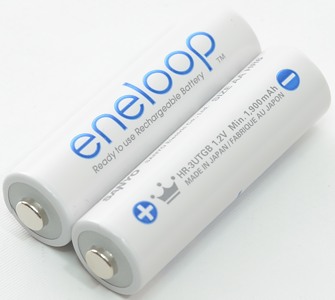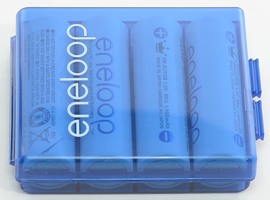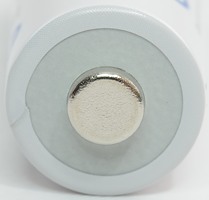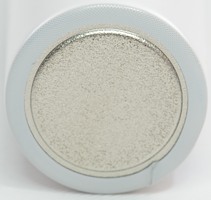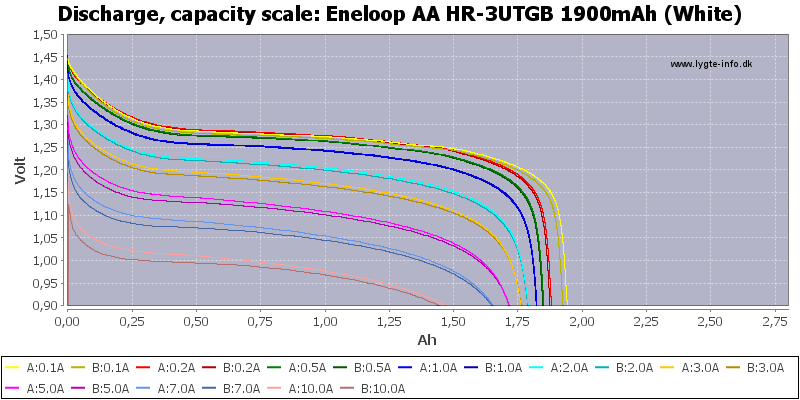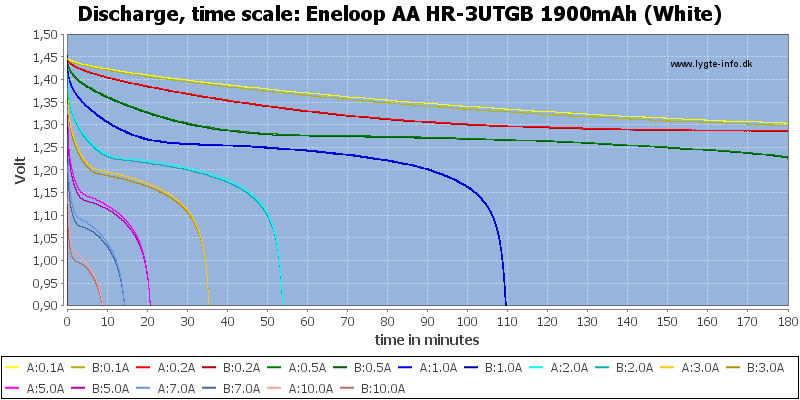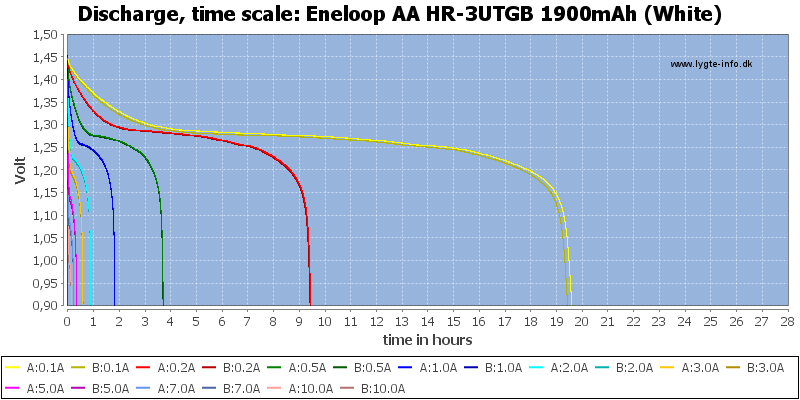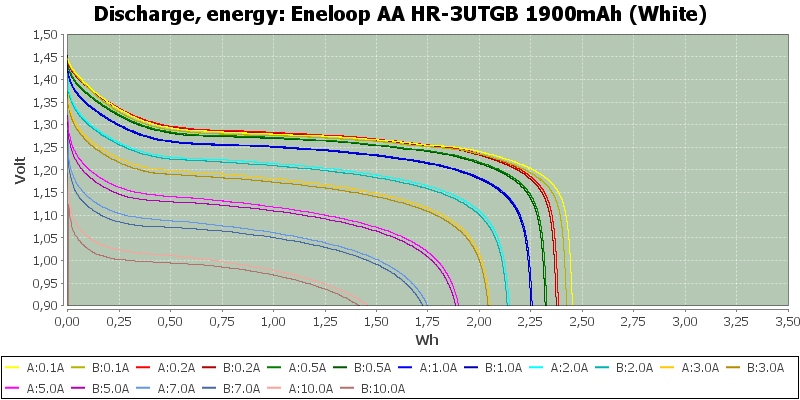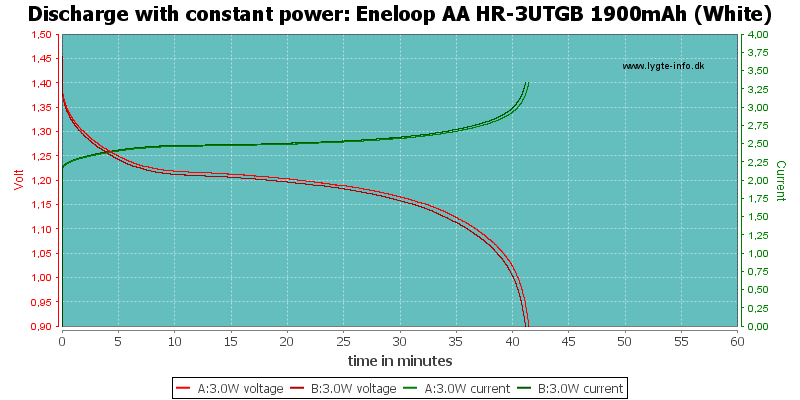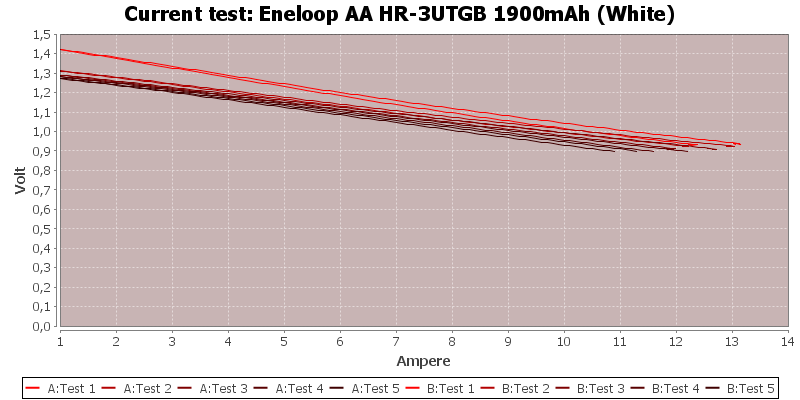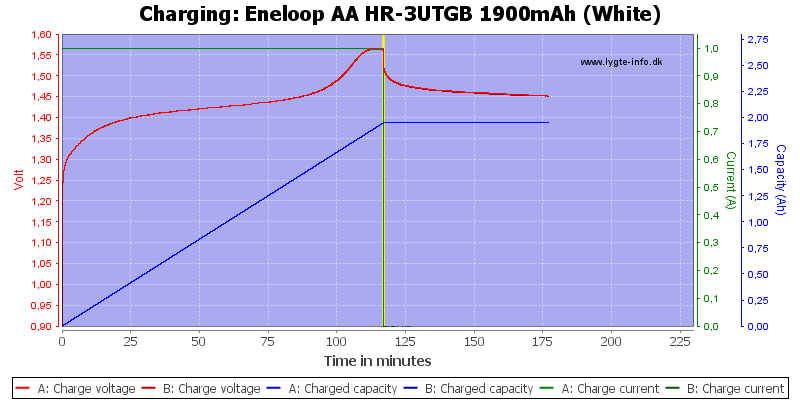Thank you for another excellent review, HKJ. :thumbsup:
I bought 8 of these batteries. My intention was to make a 5-cell battery pack for my R/C car transmitter and using the other 3 in my flashlights. First of all, I "soft conditioned" them all with my MAHA C808M charger. Then, I discharged them @ .3A, individually, down to .9V with my hobby charger. Their capacities were as follows:
#1: 975 mAh (second discharge w/o recharging: 281 mAh, total: 1256 mAh).
#2: 90 mAh (second discharge w/o recharging: 1657 mAh, total: 1747 mAh).
#3: 1750 mAh
#4: 1750 mAh
#5: 1751 mAh (despite initial voltage sag).
#6: 1783 mAh
#7: 1731 mAh
#8: 1769 mAh
I "soft conditioned" them all, a second time. Then, I increased the discharge current to 1A. Their capacities down to .9V were as follows:
#1: 2 mAh (severe voltage sag. Second discharge w/o recharging: 281 mAh)
#2: 50 mAh (severe voltage sag. Second discharge w/o recharging: no avail).
#3: 1479 mAh
#4: 1385 mAh
#5: 1341 mAh (despite initial voltage sag).
#6: 1491 mAh
#7: 1479 mAh
#8: 1493 mAh
It was clear that #1, 2 and 5 were not eligible for my pack but I gave #4 another chance because it did not sag @1A discharge rate. It was just a little lazier than the best ones. I charged it individually @ .5A but it didn't seem to give a clue to the charger for terminating the charge cycle. When I manually terminated the charge cycle, it was @ 1.70V and 3600 mAh were pumped in it! I was surprised that it was just warm, not hot at all! I was further surprised when it supplied 1711 mAh @1A discharge down to .9V. It was not toasted. To the opposite, it was now the best performer of the lot. Since my MAHA C808M charges @ 1A during "soft conditioning", I concluded that the slower charge rate of .5A did the trick. Am I correct in my assumption?
Anyway, I made the pack with cells #4, 8, 6, 3 and 7. I gave the pack .5A charge and 1A discharge down to 4.5V (.9 volt/cell). It supplied 1851 mAh! Better than #4 alone!! I repeated the same cycle and the pack was very consistent: 1856 mAh.
I made another cycle at double the charge rate: 1A charge and 1A discharge to 4.5V. I was expecting a drop in capacity due to higher charge current but the pack supplied exactly 1856 mAh again. If lower charge rate had made the above trick, the capacity of the pack should have been reduced after doubling the charge rate. Shall I conclude that the merits of multiple initial cycling overruled the stress of doubling the charge rate?
I now have a very consistent pack, with more than enough juice for my R/C transmitter and its extremely low self-discharge rate is a big bonus. It doesn't miss charge terminations either. It peaked @ 7.67 and 7.70V at .5A charge rate (1.534 and 1.54 V/cell, respectively). This climbed to 7.85V (1.57V/cell) @ 1A charge rate. I would like to charge the pack faster. Even if the official specs seem to allow 2A charge rate, would this harm the cells? If not; shall I expect reduced capacity? Or, is it probable that this would lead to another surprise like further increased capacity (again @ 1A discharge rate, of course)?
I think #1 and #2 are crap. Is this correct? If so, would you like to suggest a cycling method or something for recovering #5? This may be a good excuse for buying a new single AA cell flashlight!

Thank you for reading all this. I couldn't consult w/o letting you know my findings. Besides, this may be an interesting story, after all…
